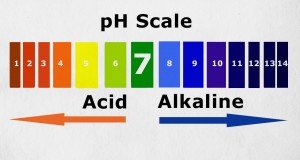How a mammogram actually causes breast cancer
(NaturalHealth365) An X-ray picture of the breast called a “mammogram” is declared the best tests for early signs of breast cancer, according to the United States Centers for Disease Control and Prevention (CDC). Annual detection screening is recommended as early as age 40 by both the American Cancer Society and the National Comprehensive Cancer Network, while the United States Preventive Services Task Force recommends screenings every other year starting at age 50.
While mammogram guidelines differ amongst organizations, they all agree there are concerns about the test. Yet, disputes exist amongst experts when it comes to mammography detecting invasive breast cancer. So, the question remains, do the benefits really outweigh the risks?
In reality, more and more studies are showing that a mammogram breast screening has some major flaws – which put women at serious health risk and actually increase the risk of cancer.
Strange logic: Zero stage cancer detected but treated aggressively
Ductal carcinoma in situ (DCIS) refers to the abnormal growth of cells forming a lesion between 1 to 1.5 centimeters in diameter. While this is not cancer, approximately 25 percent (60,000 cases) of all newly diagnosed breast cancer falls within this category each year.
Because evidence indicates that less than half of DCIS cases progress to invasive cancer, some experts declare it should be reclassified as a non-cancerous condition. Additionally, they recommend a “watchful eye” for women who have this condition rather than invasive therapy. After all, why treat someone that doesn’t have cancer with chemotherapy or radiation – which places their immune systems at risk for a lifetime?
However, mammography proponents claim they’re saving lives through early detection and treatment of DCIS. They view it as pre-cancerous or “stage zero cancer” and believe it could eventually cause harm if left untreated. Therefore, they recommend treating it in the same manner as invasive cancer with aggressive treatments. But, is this right or fair?
According to Time Magazine, “Cancer has a language problem… A 57-year old woman with low-grade DCIS that will almost certainly never become invasive hears the same word as the 34-year old woman who has metastatic malignancies that will kill her. That’s confusing to patients conditioned to treat every cancer diagnosis as an emergency, in a world that still reacts to cancer as though it’s the beginning of the end.”
The latest round of controversy was set off about DCIS treatment after a very recent study was published by JAMA Oncology. After a 20 year analyzation on 100,000 women who were diagnosed with DCIS, the mortality rate from breast cancer of these patients was the same as the general population at 3.3 percent.
Radiation from mammogram screening is a breast cancer risk
While several organizations like the Susan G. Komen for the Cure heavily promotes mammograms for early screening for breast cancer, it’s ironic that mammogram machines put each woman at risk for the very thing they want to prevent. The ionizing radiation used to detect breast tumors is a risk factor for breast cancer development. Additionally, the crushing compression may potentially spread cancer if it exists.
After several studies, Cornell University determined people who are exposed to ionizing radiation emitted from machines like the mammogram machine places themselves at risk for breast cancer. They also stated, “…female beast tissue is highly susceptible to radiation effects” as it “is one of the most sensitive tissues to the carcinogenic action of ionizing radiation.” They also revealed that it takes a minimum of five to 10 years for a radiation-induced breast cancer to develop.
Finally, they concluded that greater levels of radiation exposure lead to greater risk of breast cancer. Every time a woman is exposed to this form of radiation, she is placing herself at higher risk – especially if the screening is done when there is estrogen stimulation and tissue proliferation that occurs during monthly menstrual cycles.
Prevention of breast cancer is better than detection
While early detection of breast cancer can be done by mammogram screening, it is not the same as “prevention.” Lifestyle choices will help you prevent cancer or any chronic illness. Be sure to eat real whole and organic foods, drink plenty of fresh water, exercise regularly, get plenty of rest, and manage stress levels.
About the author: Abby Campbell is a medical, health, and nutrition research writer. She’s dedicated to helping people live a healthy lifestyle in all aspects – physically, mentally, emotionally, and spiritually. Abby practices, writes, and coaches on natural preventive care, nutritional medicine, and complementary and alternative therapy.
References:
https://www.cdc.gov/cancer/breast/basic_info/mammograms.htm
https://www.cancer.org/cancer/breastcancer/moreinformation/breastcancerearlydetection/breast-cancer-early-detection-acs-recs
https://www.nccn.org/about/news/newsinfo.aspx?NewsID=231
https://www.cancer.org/acs/groups/content/@editorial/documents/document/acspc-044552.pdf
https://time.com/4057310/breast-cancer-overtreatment
https://oncology.jamanetwork.com/article.aspx?articleid=2427491
https://envirocancer.cornell.edu/factsheet/physical/fs52.radiation.cfm











